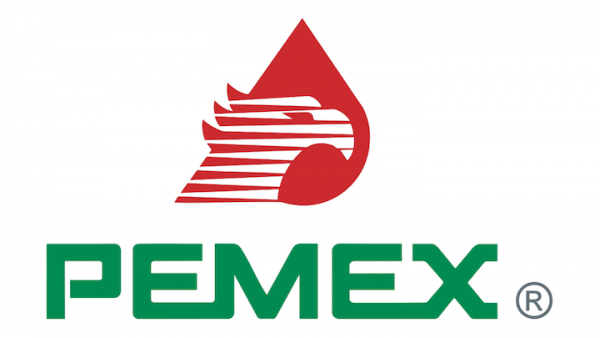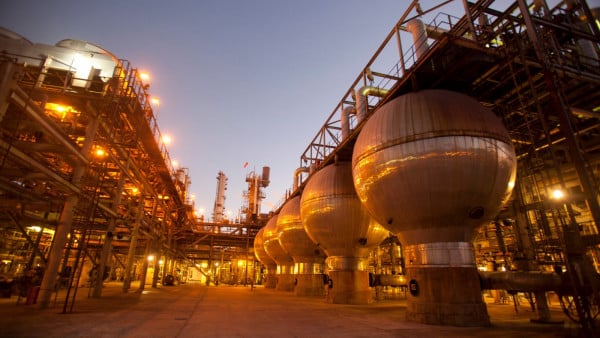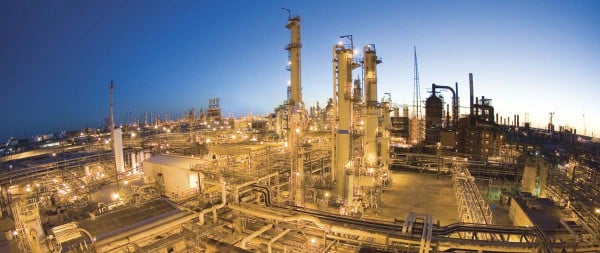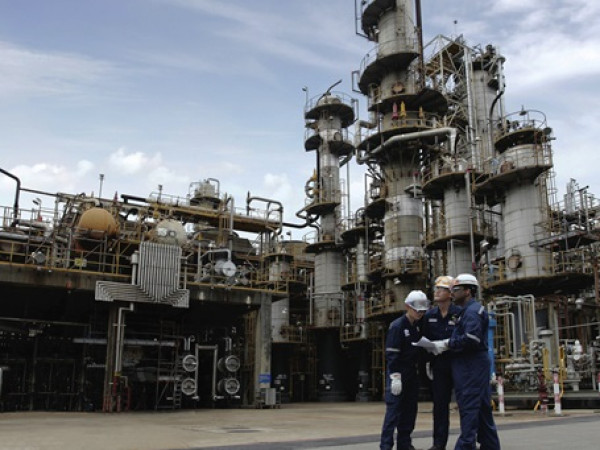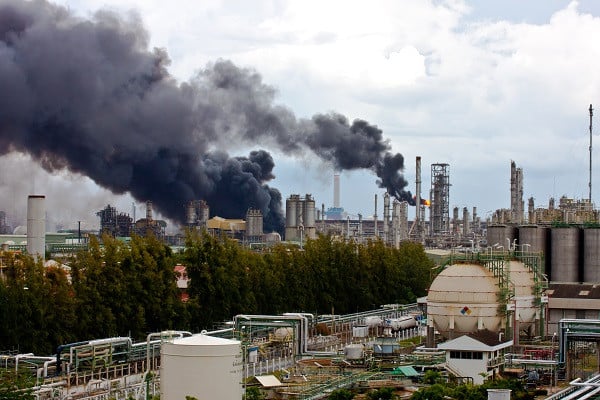In petroleum refining, the Crude Distillation Unit (CDU), also known as as the Atmospheric Distillation Unit, is usually the first processing equipment through which crude oil is fed. Crude oil is composed of a mixture of hydrocarbons, and the distillation process separates this crude oil into broad categories of its component hydrocarbons, or "fractions," which serve as feedstocks for all other processing units at the refinery.
As oil is being fed into the crude distillation unit, the first thing that happens is the crude is heated to a temperature between 215°F and 280°F (100°C - 137°C). This allows salts, which can be harmful and corrosive to some equipment, to be removed at the desalter. The now desalted crude is further heated to temperatures up to 750°F (400°C) as it is fed into the atmospheric distillation tower where the vapors and liquids separate based on the different temperatures at which they boil/condense. At temperatures above 750°F (400°C), the oil would thermally crack, or break apart, which would hinder the distillation process.
The lighter hydrocarbons condense at higher points in the distillation tower, while heavier hydrocarbons condense lower in the tower. These hydrocarbons (e.g., naphtha, kerosene, diesel and gas oil) are then moved out of the tower through different streams at various heights and sent to other units at the refinery for further processing or blending. The heaviest hydrocarbons that do not vaporize are drawn from the bottom of the atmospheric tower and sent to the vacuum distillation unit to be further refined.
References
- https://en.wikipedia.org/wiki/Petroleum_refining_processes#The_crude_oil_distillation_unit
- http://www.ou.edu/class/che-design/che5480-07/Petroleum%20Fractionation-Overview.pdf
- http://www.refiningnz.com/visitors--learning/classroom--learning-resources/learning-centre/how-it-works---the-refining-process/first-step-distillation.aspx
Related Topics
- Aboveground Storage Tanks (ASTs)
- Boiler Tubes
- Boilers
- Bolts
- Coker Units
- Cooling Towers
- Deaerators
- Fired Heaters
- Fixed Equipment
- Flanges
- Flare Systems
- Furnace Tubes
- Glass-lined Equipment
- Heat Exchangers
- HF Alkylation Units
- Hydrocracking Unit
- Hydrotreater
- Piping
- Pressure Relieving Devices (PRDs)
- Pressure Vessels
- Rotating Equipment
- Vacuum Distillation Unit (VDU)
- Valves
Relevant Links
Topic Tools
Share this Topic
Contribute to Definition
We welcome updates to this Integripedia definition from the Inspectioneering community. Click the link below to submit any recommended changes for Inspectioneering's team of editors to review.
Contribute to Definition









